Sistema solare
Mercury
Mercury is the smallest and innermost planet in the Solar System. Its orbital period (about 88 Earth days) is less than any other planet in the Solar System. Seen from Earth, it appears to move around its orbit in about 116 days. It has no known natural satellites. It is named after the Roman deity Mercury, the messenger to the gods.
Partly because it has almost no atmosphere to retain heat, Mercury's surface temperature varies diurnally more than any other planet in the Solar System, ranging from 100 K (−173 °C; −280 °F) at night to 700 K (427 °C; 800 °F) during the day in some equatorial regions. The poles are constantly below 180 K (−93 °C; −136 °F). Mercury's axis has the smallest tilt of any of the Solar System's planets (about 1⁄30 degree), and its orbital eccentricity is the largest of all known planets in the Solar System. At aphelion, Mercury is about 1.5 times as far from the Sun as it is at perihelion. Mercury's surface is heavily cratered and similar in appearance to the Moon, indicating that it has been geologically inactive for billions of years.
Mercury is tidally or gravitationally locked with the Sun in a 3:2 resonance, and rotates in a way that is unique in the Solar System. As seen relative to the fixed stars, it rotates on its axis exactly three times for every two revolutions it makes around the Sun. As seen from the Sun, in a frame of reference that rotates with the orbital motion, it appears to rotate only once every two Mercurian years. An observer on Mercury would therefore see only one day every two years.
Because Mercury orbits the Sun within Earth's orbit (as does Venus), it can appear in Earth's sky in the morning or the evening, but not in the middle of the night. Also, like Venus and the Moon, it displays a complete range of phases as it moves around its orbit relative to Earth. Although Mercury can appear as a bright object when viewed from Earth, its proximity to the Sun makes it more difficult to see than Venus. Two spacecraft have visited Mercury: Mariner 10 flew by in 1974 and 1975; and MESSENGER, launched in 2004, orbited Mercury over 4000 times in four years, before exhausting its fuel and crashing into the planet's surface on April 30, 2015.
Mercury Atmosphere
The atmosphere of Mercury is a surface bounded exosphere, essentially a vacuum.
Surface pressure: <~5 x 10
-15 bar (0.005 picobar)
Average temperature: 440 K (167 C) (590-725 K, sunward side)
Total mass of atmosphere: <~10000 kg
Atmospheric composition (Column abundances in 10
6 per cm
2):
-
Na: 12 000-200 000
-
Mg: 100 000
-
O2: < 40 000
-
H2: 5000
-
K: 800-1300
-
Ca: 300-1000
-
Fe: < 300
-
Al: 15
-
Traces: Ar, CO2, H2O, N2, Xe, Kr, Ne, He
Although the daylight temperature at the surface of Mercury is generally extremely high, observations strongly suggest that ice (frozen water) exists on Mercury. The floors of deep craters at the poles are never exposed to direct sunlight, and temperatures there remain below 102 K; far lower than the global average.
Mercury is too small and hot for its gravity to retain any significant atmosphere over long periods of time; it does have a tenuous surface-bounded exosphere containing hydrogen, helium, oxygen, sodium, calcium, potassium and others at a surface pressure of less than approximately 0.5 nPa (0.005 picobars). This exosphere is not stable—atoms are continuously lost and replenished from a variety of sources. Hydrogen atoms and helium atoms probably come from the solar wind, diffusing into Mercury's magnetosphere before later escaping back into space. Radioactive decay of elements within Mercury's crust is another source of helium, as well as sodium and potassium.
Venus
Venus is the second planet from the Sun, orbiting it every 224.7 Earth days. It has the longest rotation period (243 days) of any planet in the Solar System and rotates in the opposite direction to most other planets. It has no natural satellite. It is named after the Roman goddess of love and beauty. It is the second-brightest natural object in the night sky after the Moon, reaching an apparent magnitude of −4.6, bright enough to cast shadows. Because Venus is an inferior planet from Earth, it never appears to venture far from the Sun; its elongation reaches a maximum of 47.8°.
Venus is a terrestrial planet and is sometimes called Earth's "sister planet" because of their similar size, mass, proximity to the Sun, and bulk composition. It is radically different from Earth in other respects. It has the densest atmosphere of the four terrestrial planets, consisting of more than 96% carbon dioxide. The atmospheric pressure at the planet's surface is 92 times that of Earth. Venus is by far the hottest planet in the Solar System, with a mean surface temperature of 735 K (462 °C; 863 °F), even though Mercury is closer to the Sun. Venus is shrouded by an opaque layer of highly reflective clouds of sulfuric acid, preventing its surface from being seen from space in visible light. It may have had water oceans in the past, but these would have vaporized as the temperature rose due to a runaway greenhouse effect. The water has probably photodissociated, and the free hydrogen has been swept into interplanetary space by the solar wind because of the lack of a planetary magnetic field. Venus's surface is a dry desertscape interspersed with slab-like rocks and is periodically resurfaced by volcanism.
As one of the brightest objects in the sky, Venus has been a major fixture in human culture for as long as records have existed. It has been made sacred to gods of many cultures, and has been a prime inspiration for writers and poets as the "morning star" and "evening star". Venus was the first planet to have its motions plotted across the sky, as early as the second millennium BC, and was a prime target for early interplanetary exploration as the closest planet to Earth. It was the first planet beyond Earth visited by a spacecraft (Mariner 2) in 1962, and the first to be successfully landed on (by Venera 7) in 1970. Venus's thick clouds render observation of its surface impossible in visible light, and the first detailed maps did not emerge until the arrival of the Magellan orbiter in 1991. Plans have been proposed for rovers or more complex missions, but they are hindered by Venus's hostile surface conditions.
Venus Atmosphere
Surface pressure: 92 bars
Surface density: ~65. kg/m
3
Scale height: 15.9 km
Average temperature: 737 K (464 C)
Total mass of atmosphere: ~4.8 x 10
20
Wind speeds: 0.3 to 1.0 m/s (surface)
Mean molecular weight: 43.45
Atmospheric composition (near surface, by volume):
-
96.5% CO2
-
3.5% N2
-
Traces: SO2 (150ppm), Ar (70ppm), H2O (20ppm), CO (17ppm), He (12ppm), Ne (7ppm)
Venus has an extremely dense atmosphere composed of 96.5% carbon dioxide, 3.5% nitrogen, and traces of other gases, most notably sulfur dioxide. The mass of its atmosphere is 93 times that of Earth's, whereas the pressure at its surface is about 92 times that at Earth's — a pressure equivalent to that at a depth of nearly 1 kilometre under Earth's oceans. The density at the surface is 65 kg/m3, 6.5% that of water or 50 times as dense as Earth's atmosphere at 20 °C at sea level. The CO2-rich atmosphere generates the strongest greenhouse effect in the Solar System, creating surface temperatures of at least 735 K (462 °C). This makes Venus's surface hotter than Mercury's, which has a minimum surface temperature of 55 K (−220 °C) and maximum surface temperature of 695 K (420 °C), even though Venus is nearly twice Mercury's distance from the Sun and thus receives only 25% of Mercury's solar irradiance. This temperature is higher than that used for sterilization. The surface of Venus is often said to resemble traditional accounts of Hell.
Earth
Earth (otherwise known as the world, in Greek: Γαῖα Gaia, or in Latin: Terra) is the third planet from the Sun, the densest planet in the Solar System, the largest of the Solar System's four terrestrial planets, and the only astronomical object known to harbor life.
According to radiometric dating and other sources of evidence, Earth formed about 4.54 billion years ago. Earth gravitationally interacts with other objects in space, especially the Sun and the Moon. During one orbit around the Sun, Earth rotates about its own axis 366.26 times, creating 365.26 solar days or one sidereal year. Earth's axis of rotation is tilted 23.4° away from the perpendicular of its orbital plane, producing seasonal variations on the planet's surface within a period of one tropical year (365.24 solar days). The Moon, Earth's only permanent natural satellite, by its gravitational relationship with Earth, causes ocean tides, stabilizes the orientation of Earth's rotational axis, and gradually slows Earth's rotational rate.
Earth's lithosphere is divided into several rigid tectonic plates that migrate across the surface over periods of many millions of years. 71% of Earth's surface is covered with water. The remaining 29% is land mass—consisting of continents and islands—that together has many lakes, rivers, and other sources of water that contribute to the hydrosphere. The majority of Earth's polar regions are covered in ice, including the Antarctic ice sheet and the sea ice of the Arctic ice pack. Earth's interior remains active with a solid iron inner core, a liquid outer core that generates the Earth's magnetic field, and a convecting mantle that drives plate tectonics.
Within its first billion years, life appeared in Earth's oceans, and began to affect the atmosphere and surface, leading to the proliferation of aerobic and anaerobic organisms. Since then, the combination of Earth's distance from the Sun, physical properties, and geological history have allowed life to evolve and today thrive. The earliest undisputed life on Earth arose at least 3.5 billion years ago. Earlier physical evidence of life includes biogenic graphite in 3.7 billion-year-old metasedimentary rocks discovered in southwestern Greenland, as well as "remains of biotic life" found in 4.1 billion-year-old rocks in Western Australia. Except when interrupted by mass extinction events, Earth's biodiversity has continually expanded. Although scholars estimate that over 99% of all species of life (over five billion) that ever lived on Earth are today extinct, there are an estimated 10–14 million species still in existence, of which about 1.2 million have been documented and over 86% have not yet been described. More recently, in May 2016, scientists reported that 1 trillion species are estimated to be on Earth currently with only one-thousandth of one percent described. In July 2016, scientists reported identifying a set of 355 genes from the Last Universal Common Ancestor (LUCA) of all organisms living on Earth. Over 7.3 billion humans live on Earth and depend on its biosphere and minerals for their survival. Earth's human population is divided among about 200 sovereign states that interact through diplomacy, conflict, travel, trade, and communication media.
Earth Atmosphere
Surface pressure: 1014 mb
Surface density: 1.217 kg/m
3
Scale height: 8.5 km
Average temperature: 288 K (15°C)
Total mass of atmosphere: 5.1 x 10
18 kg
Wind speeds: 0.3 to 1.0 m/s (surface)
Diurnal temperature range: 283 K to 293 K (10 to 20 C)
Wind speeds: 0 to 100 m/s
Mean molecular weight: 28.97
Atmospheric composition (by volume, dry air):
-
78.08% N2
-
20.95% O2
-
Minor: Ar (9340ppm), CO2 (400ppm), Ne (18.18ppm), He (5.24ppm), CH4 (1.7ppm), Kr (1.14ppm), H2 (0.55ppm)
Water is highly variable, typically makes up about 1%
The atmospheric pressure on Earth's surface averages 101.325 kPa, with a scale height of about 8.5 km. It has a composition of 78% nitrogen and 21% oxygen, with trace amounts of water vapor, carbon dioxide and other gaseous molecules. The height of the troposphere varies with latitude, ranging between 8 km at the poles to 17 km at the equator, with some variation resulting from weather and seasonal factors.
Earth's atmosphere has no definite boundary, slowly becoming thinner and fading into outer space. Three-quarters of the atmosphere's mass is contained within the first 11 km of the surface. This lowest layer is called the troposphere. Energy from the Sun heats this layer, and the surface below, causing expansion of the air. This lower-density air then rises, and is replaced by cooler, higher-density air. The result is atmospheric circulation that drives the weather and climate through redistribution of thermal energy.
Mars
Mars is the fourth planet from the Sun and the second-smallest planet in the Solar System, after Mercury. Named after the Roman god of war, it is often referred to as the "Red Planet" because the iron oxide prevalent on its surface gives it a reddish appearance. Mars is a terrestrial planet with a thin atmosphere, having surface features reminiscent both of the impact craters of the Moon and the valleys, deserts, and polar ice caps of Earth.
The rotational period and seasonal cycles of Mars are likewise similar to those of Earth, as is the tilt that produces the seasons. Mars is the site of Olympus Mons, the largest volcano and second-highest known mountain in the Solar System, and of Valles Marineris, one of the largest canyons in the Solar System. The smooth Borealis basin in the northern hemisphere covers 40% of the planet and may be a giant impact feature. Mars has two moons, Phobos and Deimos, which are small and irregularly shaped. These may be captured asteroids, similar to 5261 Eureka, a Mars trojan.
Until the first successful Mars flyby in 1965 by Mariner 4, many speculated about the presence of liquid water on the planet's surface. This was based on observed periodic variations in light and dark patches, particularly in the polar latitudes, which appeared to be seas and continents; long, dark striations were interpreted by some as irrigation channels for liquid water. These straight line features were later explained as optical illusions, though geological evidence gathered by uncrewed missions suggests that Mars once had large-scale water coverage on its surface at an earlier stage of its existence. In 2005, radar data revealed the presence of large quantities of water ice at the poles and at mid-latitudes. The Mars rover Spirit sampled chemical compounds containing water molecules in March 2007. The Phoenix lander directly sampled water ice in shallow Martian soil on July 31, 2008. On September 28, 2015, NASA announced the presence of briny flowing salt water on the Martian surface.
Mars is host to seven functioning spacecraft: five in orbit—2001 Mars Odyssey, Mars Express, Mars Reconnaissance Orbiter, MAVEN and Mars Orbiter Mission—and two on the surface—Mars Exploration Rover Opportunity and the Mars Science Laboratory Curiosity. Observations by the Mars Reconnaissance Orbiter have revealed possible flowing water during the warmest months on Mars. In 2013, NASA's Curiosity rover discovered that Mars's soil contains between 1.5% and 3% water by mass (albeit attached to other compounds and thus not freely accessible).
There are ongoing investigations assessing the past habitability potential of Mars, as well as the possibility of extant life. In situ investigations have been performed by the Viking landers, Spirit and Opportunity rovers, Phoenix lander, and Curiosity rover. Future astrobiology missions are planned, including the Mars 2020 and ExoMars rovers.
Mars can easily be seen from Earth with the naked eye, as can its reddish coloring. Its apparent magnitude reaches −2.91, which is surpassed only by Jupiter, Venus, the Moon, and the Sun. Optical ground-based telescopes are typically limited to resolving features about 300 kilometers (190 mi) across when Earth and Mars are closest because of Earth's atmosphere.
Martian Atmosphere
Surface pressure: 6.36 mb at mean radius (variable from 4.0 to 8.7 mb depending on season)
Surface density: ~0.020 kg/m
3
Scale height: 11.1 km
Average temperature: ~210 K (-63°C)
Total mass of atmosphere: ~2.5 x 10
16 kg
Diurnal temperature range: 184 K to 242 K (-89 to -31 C)
Wind speeds: 2-7 m/s (summer), 5-10 m/s (fall), 17-30 m/s (dust storm)
Mean molecular weight: 43.34
Atmospheric composition (by volume):
-
95.32% CO2
-
2.7% N2
-
Minor: H2O (210ppm), NO (100ppm), Ne (2.5ppm), HDO (Hydrogen-Deuterium-Oxygen, 0.85ppm), Kr (0.3ppm), Xe (0.08ppm)
Water is highly variable, typically makes up about 1%
The atmosphere of Mars is the layer of gases surrounding Mars. It is composed mostly of carbon dioxide. The atmospheric pressure on the Martian surface averages 600 pascals (0.087 psi; 6.0 mbar), about 0.6% of Earth's mean sea level pressure of 101.3 kilopascals (14.69 psi; 1.013 bar). It ranges from a low of 30 pascals (0.0044 psi; 0.30 mbar) on Olympus Mons's peak to over 1,155 pascals (0.1675 psi; 11.55 mbar) in the depths of Hellas Planitia. This pressure is well below the Armstrong limit for the unprotected human body. Mars's atmospheric mass of 25 teratonnes compares to Earth's 5148 teratonnes with a scale height of about 11 kilometres (6.8 mi) versus Earth's 7 kilometres (4.3 mi).
The atmosphere is quite dusty, giving the Martian sky a light brown or orange-red color when seen from the surface.
Jupiter
Jupiter is the fifth planet from the Sun and the largest in the Solar System. It is a giant planet with a mass one-thousandth that of the Sun, but two and a half times that of all the other planets in the Solar System combined. Jupiter is a gas giant, along with Saturn, with the other two giant planets, Uranus and Neptune, being ice giants. Jupiter was known to astronomers of ancient times. The Romans named it after their god Jupiter. When viewed from Earth, Jupiter can reach an apparent magnitude of −2.94, bright enough for its reflected light to cast shadows, and making it on average the third-brightest object in the night sky after the Moon and Venus.
Jupiter is primarily composed of hydrogen with a quarter of its mass being helium, though helium comprises only about a tenth of the number of molecules. It may also have a rocky core of heavier elements, but like the other giant planets, Jupiter lacks a well-defined solid surface. Because of its rapid rotation, the planet's shape is that of an oblate spheroid (it has a slight but noticeable bulge around the equator). The outer atmosphere is visibly segregated into several bands at different latitudes, resulting in turbulence and storms along their interacting boundaries. A prominent result is the Great Red Spot, a giant storm that is known to have existed since at least the 17th century when it was first seen by telescope. Surrounding Jupiter is a faint planetary ring system and a powerful magnetosphere. Jupiter has at least 67 moons, including the four large Galilean moons discovered by Galileo Galilei in 1610. Ganymede, the largest of these, has a diameter greater than that of the planet Mercury.
Jupiter has been explored on several occasions by robotic spacecraft, most notably during the early Pioneer and Voyager flyby missions and later by the Galileo orbiter. In late February 2007, Jupiter was visited by the New Horizons probe, which used Jupiter's gravity to increase its speed and bend its trajectory en route to Pluto. The latest probe to visit the planet is Juno, which entered into orbit around Jupiter on July 4, 2016. Future targets for exploration in the Jupiter system include the probable ice-covered liquid ocean of its moon Europa.
Jovian Atmosphere
Surface pressure: >>1000 bars
Temperature at 1 bar: 165 K (-108 C)
Temperature at 0.1 bar: 112 K (-161 C)
Wind speeds: up to 150 m/s (<30 degrees latitude), up to 40 m/s (>30 degrees latitude)
Scale height: 27 km
Mean molecular weight: 2.22
Atmospheric composition (by volume):
-
89.8% H2
-
10.2% He
-
Minor: CH4 (3000ppm), NH3 (260ppm), HD (Hydrogen Deuteride, 28ppm), C2H6 (ethane, 5.8ppm), H2O (4ppm, varies with pressure)
Jupiter has the largest planetary atmosphere in the Solar System, spanning over 5000 km (3000 mi) in altitude. Because Jupiter has no surface, the base of its atmosphere is usually considered to be the point at which atmospheric pressure is equal to 100 kPa (1.0 bar).
Jupiter is perpetually covered with clouds composed of ammonia crystals and possibly ammonium hydrosulfide. The clouds are located in the tropopause and are arranged into bands of different latitudes, known as tropical regions. The interactions of these conflicting circulation patterns cause storms and turbulence. Wind speeds of 100 m/s (360 km/h) are common in zonal jets.
Saturn
Saturn is the sixth planet from the Sun and the second-largest in the Solar System, after Jupiter. It is a gas giant with an average radius about nine times that of Earth. Although only one-eighth the average density of Earth, with its larger volume Saturn is just over 95 times more massive. Saturn is named after the Roman god of agriculture.
Saturn's interior is probably composed of a core of iron–nickel and rock (silicon and oxygen compounds). This core is surrounded by a deep layer of metallic hydrogen, an intermediate layer of liquid hydrogen and liquid helium, and finally outside the Frenkel line a gaseous outer layer. Saturn has a pale yellow hue due to ammonia crystals in its upper atmosphere. Electrical current within the metallic hydrogen layer is thought to give rise to Saturn's planetary magnetic field, which is weaker than Earth's, but has a magnetic moment 580 times that of Earth due to Saturn's larger size. Saturn's magnetic field strength is around one-twentieth of Jupiter's. The outer atmosphere is generally bland and lacking in contrast, although long-lived features can appear. Wind speeds on Saturn can reach 1800 km/h (500 m/s), higher than on Jupiter, but not as high as those on Neptune.
Saturn has a prominent ring system that consists of nine continuous main rings and three discontinuous arcs and that is composed mostly of ice particles with a smaller amount of rocky debris and dust. Sixty-two moons are known to orbit Saturn, of which fifty-three are officially named. This does not include the hundreds of moonlets comprising the rings. Titan, Saturn's largest moon, and the second-largest in the Solar System, is larger than the planet Mercury, although less massive, and is the only moon in the Solar System to have a substantial atmosphere.
Saturnian Atmosphere
Surface pressure: >>1000 bars
Temperature at 1 bar: 134 K (-139 C)
Temperature at 0.1 bar: 84 K (-189 C)
Density at 1 bar: 0.19 kg/m
3
Wind speeds: up to 400 m/s (<30 degrees latitude), up to 150 m/s (>30 degrees latitude)
Scale height: 59.5 km
Mean molecular weight: 2.07
Atmospheric composition (by volume):
-
96.3% H2
-
3.25% He
-
Minor: CH4 (4500ppm), NH3 (125ppm), HD (Hydrogen Deuteride, 110ppm), C2H6 (ethane, 7ppm)
Saturn's atmosphere exhibits a banded pattern similar to Jupiter's, but Saturn's bands are much fainter and are much wider near the equator. The composition of the clouds varies with depth and increasing pressure. The winds on Saturn are the second fastest among the Solar System's planets, after Neptune's.
Uranus
Uranus is the seventh planet from the Sun. It has the third-largest planetary radius and fourth-largest planetary mass in the Solar System. Uranus is similar in composition to Neptune, and both have different bulk chemical composition from that of the larger gas giants Jupiter and Saturn. For this reason, scientists often classify Uranus and Neptune as "ice giants" to distinguish them from the gas giants. Uranus's atmosphere is similar to Jupiter's and Saturn's in its primary composition of hydrogen and helium, but it contains more "ices" such as water, ammonia, and methane, along with traces of other hydrocarbons. It is the coldest planetary atmosphere in the Solar System, with a minimum temperature of 49 K (−224.2 °C), and has a complex, layered cloud structure with water thought to make up the lowest clouds and methane the uppermost layer of clouds. The interior of Uranus is mainly composed of ices and rock.
Uranus is the only planet whose name is derived from a figure from Greek mythology, from the Latinized version of the Greek god of the sky Ouranos. Like the other giant planets, Uranus has a ring system, a magnetosphere, and numerous moons. The Uranian system has a unique configuration among those of the planets because its axis of rotation is tilted sideways, nearly into the plane of its solar orbit. Its north and south poles, therefore, lie where most other planets have their equators. In 1986, images from Voyager 2 showed Uranus as an almost featureless planet in visible light, without the cloud bands or storms associated with the other giant planets. Observations from Earth have shown seasonal change and increased weather activity as Uranus approached its equinox in 2007. Wind speeds can reach 250 metres per second (900 km/h, 560 mph).
Uranian Atmosphere
Surface pressure: >>1000 bars
Temperature at 1 bar: 76 K (-197 C)
Temperature at 0.1 bar: 53 K (-220 C)
Density at 1 bar: 0.42 kg/m
3
Wind speeds: 0-250 m/s
Scale height: 27.7 km
Mean molecular weight: 2.64
Atmospheric composition (by volume):
-
82.5% H2
-
15.2% He
-
2.3% CH4
-
Minor: HD (Hydrogen Deuteride, 148ppm)
Although there is no well-defined solid surface within Uranus's interior, the outermost part of Uranus's gaseous envelope that is accessible to remote sensing is called its atmosphere. Remote-sensing capability extends down to roughly 300 km below the 1 bar (100 kPa) level, with a corresponding pressure around 100 bar (10 MPa) and temperature of 320 K. The tenuous thermosphere extends over two planetary radii from the nominal surface, which is defined to lie at a pressure of 1 bar. The Uranian atmosphere can be divided into three layers: the troposphere, between altitudes of −300 and 50 km and pressures from 100 to 0.1 bar (10 MPa to 10 kPa); the stratosphere, spanning altitudes between 50 and 4000 km and pressures of between 0.1 and 10−10 bar (10 kPa to 10 µPa); and the thermosphere extending from 4000 km to as high as 50,000 km from the surface. There is no mesosphere.
Neptune
Neptune is the eighth and farthest known planet from the Sun in the Solar System. In the Solar System, it is the fourth-largest planet by diameter, the third-most-massive planet, and the densest giant planet. Neptune is 17 times the mass of Earth and is slightly more massive than its near-twin Uranus, which is 15 times the mass of Earth and slightly larger than Neptune. Neptune orbits the Sun once every 164.8 years at an average distance of 30.1 astronomical units (4.50×109 km). It is named after the Roman god of the sea and has the astronomical symbol ♆, a stylised version of the god Neptune's trident.
Neptune is not visible to the unaided eye and is the only planet in the Solar System found by mathematical prediction rather than by empirical observation. Unexpected changes in the orbit of Uranus led Alexis Bouvard to deduce that its orbit was subject to gravitational perturbation by an unknown planet. Neptune was subsequently observed with a telescope on 23 September 1846 by Johann Galle within a degree of the position predicted by Urbain Le Verrier. Its largest moon, Triton, was discovered shortly thereafter, though none of the planet's remaining known 14 moons were located telescopically until the 20th century. The planet's distance from Earth gives it a very small apparent size, making it challenging to study with Earth-based telescopes. Neptune was visited by Voyager 2, when it flew by the planet on 25 August 1989. The advent of the Hubble Space Telescope and large ground-based telescopes with adaptive optics has recently allowed for additional detailed observations from afar.
Neptune's composition is similar to that of Uranus and unlike those of the larger gas giants, Jupiter and Saturn. Like Jupiter's and Saturn's, Neptune's atmosphere is composed primarily of hydrogen and helium, along with traces of hydrocarbons and possibly nitrogen, but contains a higher proportion of "ices" such as water, ammonia, and methane. However, its interior, like that of Uranus, is primarily composed of ices and rock, which is why Uranus and Neptune are normally considered "ice giants" to emphasise this distinction. Traces of methane in the outermost regions in part account for the planet's blue appearance.
In contrast to the hazy, relatively featureless atmosphere of Uranus, Neptune's atmosphere has active and visible weather patterns. For example, at the time of the Voyager 2 flyby in 1989, the planet's southern hemisphere had a Great Dark Spot comparable to the Great Red Spot on Jupiter. These weather patterns are driven by the strongest sustained winds of any planet in the Solar System, with recorded wind speeds as high as 2100 kilometres per hour (580 m/s; 1300 mph). Because of its great distance from the Sun, Neptune's outer atmosphere is one of the coldest places in the Solar System, with temperatures at its cloud tops approaching 55 K (−218 °C). Temperatures at the planet's centre are approximately 5400 K (5100 °C). Neptune has a faint and fragmented ring system (labelled "arcs"), which was first detected during the 1960s and confirmed by Voyager 2.
Neptunian Atmosphere
Surface pressure: >>1000 bars
Temperature at 1 bar: 72 K (-201 C)
Temperature at 0.1 bar: 55 K (-218 C)
Density at 1 bar: 0.45 kg/m
3
Wind speeds: 0-580 m/s
Scale height: 19.1-20.3 km
Mean molecular weight: 2.53-2.69
Atmospheric composition (by volume):
-
80.0% H2
-
19.0% He
-
1.5% CH4
-
Minor: HD (Hydrogen Deuteride, 192ppm), C2H6 (ethane, 1.5ppm)
Neptune's weather is characterised by extremely dynamic storm systems, with winds reaching speeds of almost 600 m/s (2200 km/h; 1300 mph)—nearly reaching supersonic flow. The abundance of methane, ethane and acetylene at Neptune's equator is 10–100 times greater than at the poles. This is interpreted as evidence for upwelling at the equator and subsidence near the poles.
Sun
The Sun is the star at the center of the Solar System. It is a nearly perfect sphere of hot plasma, with internal convective motion that generates a magnetic field via a dynamo process. It is by far the most important source of energy for life on Earth. Its diameter is about 109 times that of Earth, and its mass is about 330 000 times that of Earth, accounting for about 99.86% of the total mass of the Solar System. About three quarters of the Sun's mass consists of hydrogen; the rest is mostly helium, with much smaller quantities of heavier elements, including oxygen, carbon, neon, and iron.
The Sun is a G-type main-sequence star (G2V) based on spectral class and is informally referred to as a yellow dwarf. It formed approximately 4.6 billion years ago from the gravitational collapse of matter within a region of a large molecular cloud. Most of this matter gathered in the center, whereas the rest flattened into an orbiting disk that became the Solar System. The central mass became so hot and dense, that it eventually initiated nuclear fusion in its core. It is thought that almost all stars form by this process.
The Sun is roughly middle-aged and has not changed dramatically for over four billion years, and will remain fairly stable for more than another five billion years. However, after hydrogen fusion in its core has stopped, the Sun will undergo severe changes and become a red giant. It is calculated that the Sun will become sufficiently large to engulf the current orbits of Mercury, Venus, and possibly Earth.
The enormous effect of the Sun on Earth has been recognized since prehistoric times, and the Sun has been regarded by some cultures as a deity. The synodic rotation of Earth and its orbit around the Sun are the basis of the solar calendar, which is the predominant calendar in use today.
Solar Atmosphere
Surface Gas Pressure (top of photosphere): 0.868 mb
Pressure at bottom of photosphere (optical depth = 1): 125 mb
Effective temperature: 5772 K
Temperature at top of photosphere: 4400 K
Temperature at bottom of photosphere: 6600 K
Temperature at top of chromosphere: ~30 000 K
Photosphere thickness: ~500 km
Chromosphere thickness: ~2500 km
Sun Spot Cycle: 11.4 yr.
Photosphere composition:
-
90.965% H2
-
8.889% He
-
Minor: O (774ppm), C (330ppm), Ne (112ppm), N (102ppm), Fe (43ppm), Mg (35ppm), Si (32ppm), S (15ppm)
Moon
The Moon is Earth's only permanent natural satellite. It is one of the largest natural satellites in the Solar System, and the largest among planetary satellites relative to the size of the planet that it orbits (its primary). It is the second-densest satellite among those whose densities are known (after Jupiter's satellite Io).
The Moon is thought to have formed approximately 4.5 billion years ago, not long after Earth. There are several hypotheses for its origin; the most widely accepted explanation is that the Moon formed from the debris left over after a giant impact between Earth and a Mars-sized body called Theia.
The Moon is in synchronous rotation with Earth, always showing the same face, with its near side marked by dark volcanic maria that fill the spaces between the bright ancient crustal highlands and the prominent impact craters. It is the second-brightest regularly visible celestial object in Earth's sky after the Sun, as measured by illuminance on Earth's surface. Its surface is actually dark (although it can appear a very bright white) with a reflectance just slightly higher than that of worn asphalt. Its prominence in the sky and its regular cycle of phases have made the Moon an important cultural influence since ancient times on language, calendars, art, and mythology.
The Moon's gravitational influence produces the ocean tides, body tides, and the slight lengthening of the day. The Moon's current orbital distance is about thirty times the diameter of Earth, with its apparent size in the sky almost the same as that of the Sun, resulting in the Moon covering the Sun nearly precisely in total solar eclipse. This matching of apparent visual size will not continue in the far future. The Moon's linear distance from Earth is currently increasing at a rate of 3.82 ± 0.07 centimetres (1.504 ± 0.028 in) per year, but this rate is not constant.
The Soviet Union's Luna programme was the first to reach the Moon with unmanned spacecraft in 1959; the United States' NASA Apollo program achieved the only manned missions to date, beginning with the first manned lunar orbiting mission by Apollo 8 in 1968, and six manned lunar landings between 1969 and 1972, with the first being Apollo 11. These missions returned over 380 kg (840 lb) of lunar rocks, which have been used to develop a geological understanding of the Moon's origin, the formation of its internal structure, and its subsequent history. After the Apollo 17 mission in 1972, the Moon has been visited only by unmanned spacecraft.
Lunar Atmosphere
Diurnal temperature range (equator): 95 K to 390 K (~ -290 F to +240 F)
Total mass of atmosphere: ~25 000 kg
Surface pressure (night): 3 x 10
-15 bar (2 x 10
-12 torr)
Abundance at surface: 2 x 10
5 particles/cm
3
Composition (particles per cubic cm):
-
4He: 40 000
-
20Ne: 40 000
-
H2: 35 000
-
40Ar: 30 000
-
22Ne: 5000
-
36Ar: 2000
-
CH4: 1000
-
NH3: 1000
-
CO2: 1000
-
Traces: O+, Al+, Si+, P+, Na+, Mg+
Composition of the tenuous lunar atmosphere is poorly known and variable, these are estimates of the upper limits of the nighttime ambient atmosphere composition. Daytime levels were difficult to measure due to heating and outgassing of Apollo surface experiments.
Planets Data
|
|
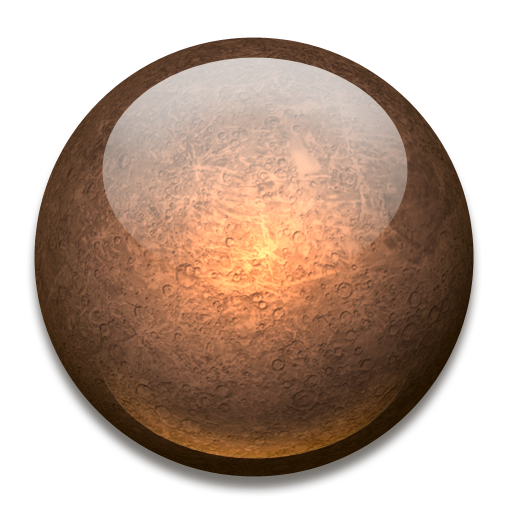
|
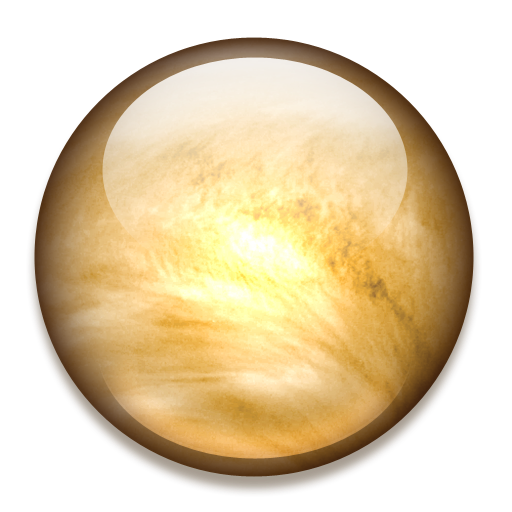
|
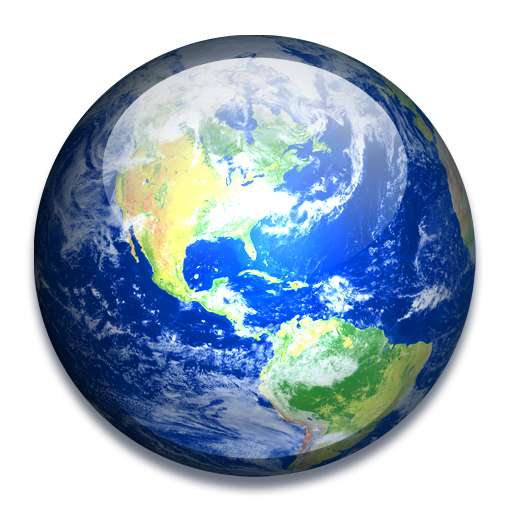
|

|
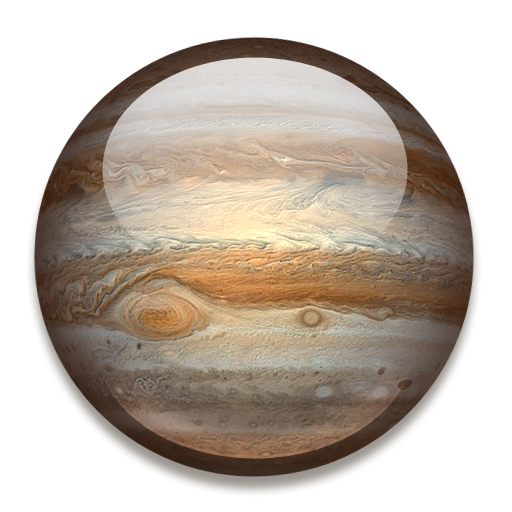
|
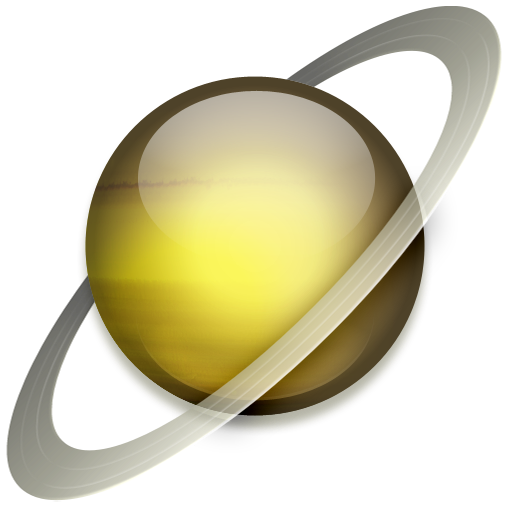
|

|
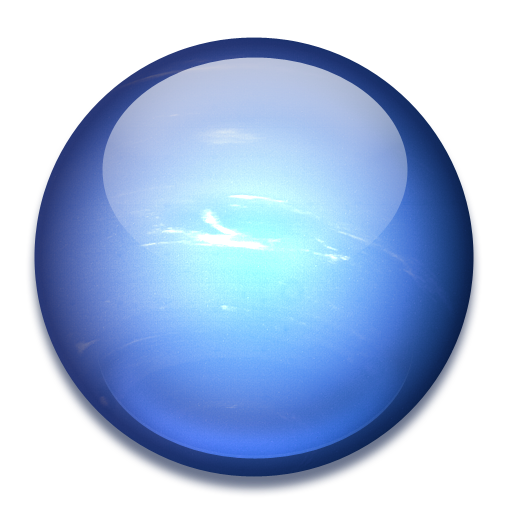
|
Mass
1024 kg
|

|
0.33011 |
4.8675 |
5.9723 |
0.64171 |
1898.19 |
568.34 |
86.813 |
102.413 |
Volume
1010 km3
|

|
6.083 |
92.843 |
108.321 |
16.318 |
143128 |
82713 |
6.833 |
6254 |
Equatorial radius
km
|

|
2439.7 |
6051.8 |
6378.14 |
3396.2 |
71492 |
60268 |
25559 |
24764 |
Polar radius
km
|

|
2439.7 |
6051.8 |
6356.75 |
3376.2 |
66854 |
54364 |
24973 |
24341 |
Volumetric mean radius
km
|

|
2439.7 |
6051.8 |
6371.01 |
3389.5 |
69911 |
58232 |
25362 |
24622 |
Core radius
km
|

|
|
|
3485 |
1700 |
|
|
|
|
|
Ellipticity
|

|
0 |
0 |
0.00335 |
0.00589 |
0.06487 |
0.09796 |
0.02293 |
0.01708 |
Mean density
kg/m3
|

|
5427 |
5243 |
5514 |
3933 |
1326 |
687 |
1271 |
1638 |
Gravity
m/s2
|

|
3.7 |
8.87 |
9.798 |
3.71 |
24.79 |
10.44 |
8.87 |
11.15 |
Acceleration
m/s2
|

|
3.7 |
8.87 |
9.78 |
3.69 |
23.12 |
8.96 |
8.69 |
11 |
Escape velocity
km/s
|

|
4.3 |
10.36 |
11.186 |
5.03 |
59.5 |
35.5 |
21.3 |
23.5 |
GM
x 106 km3/s2
|

|
0.022032 |
0.32486 |
0.3986 |
0.042828 |
126.687 |
37.931 |
5.794 |
6.8351 |
|
Bond albedo
|

|
0.068 |
0.77 |
0.306 |
0.25 |
0.343 |
0.342 |
0.3 |
0.29 |
|
Visual geometric albedo
|

|
0.142 |
0.65 |
0.367 |
0.17 |
0.52 |
0.47 |
0.51 |
0.41 |
|
Visual magnitude V(1,0)
|

|
-0.42 |
-4.4 |
-3.86 |
-1.52 |
-9.4 |
-6.88 |
-7.19 |
-6.87 |
Solar irradiance
W/m2
|

|
9082.7 |
2601.3 |
1361 |
586.2 |
50.26 |
14.82 |
3.69 |
1.508 |
Black-body temperature
K
|

|
439.6 |
226.6 |
254 |
209.8 |
109.9 |
81 |
58.1 |
46.6 |
Topographic range
km
|

|
7 |
13 |
20.4 |
30 |
|
|
|
|
Moment of inertia
I/MR2
|

|
0.35 |
0.33 |
0.3308 |
0.366 |
0.254 |
0.21 |
0.225 |
|
J2
x 10-6
|

|
50.3 |
4.458 |
1082.63 |
1960.45 |
14736 |
16298 |
3343.43 |
3411 |
|
Satellites
|

|
0 |
0 |
1 |
2 |
67 |
62 |
27 |
14 |
Semimajor axis
106 km
|

|
57.91 |
108.21 |
149.6 |
227.92 |
778.57 |
1433.53 |
2872.46 |
4495.06 |
Sidereal orbit period
days
|

|
87.969 |
224.701 |
365.256 |
686.98 |
4332.59 |
10759.2 |
30685.4 |
60189 |
Tropical orbit period
days
|

|
87.968 |
224.695 |
365.242 |
686.973 |
4330.6 |
10746.9 |
30588.7 |
59799.9 |
Perihelion
106 km
|

|
45 |
107.48 |
147.09 |
206.62 |
740.52 |
1352.55 |
2741.3 |
4444.45 |
Aphelion
106 km
|

|
69.82 |
108.94 |
152.1 |
249.23 |
816.62 |
1514.5 |
3003.62 |
4545.67 |
Synodic period
days
|

|
115.88 |
583.92 |
|
779.94 |
398.88 |
378.09 |
369.66 |
367.49 |
Mean orbital velocity
km/s
|

|
47.36 |
35.02 |
29.78 |
24.07 |
13.06 |
9.68 |
6.8 |
5.43 |
Max. orbital velocity
km/s
|

|
58.98 |
35.26 |
30.29 |
26.5 |
13.72 |
10.18 |
7.11 |
5.5 |
Min. orbital velocity
km/s
|

|
38.86 |
34.79 |
29.29 |
21.97 |
12.44 |
9.09 |
6.49 |
5.37 |
Orbit inclination
deg
|

|
7 |
3.39 |
0 |
1.85 |
1.304 |
2.485 |
0.772 |
1.769 |
|
Orbit eccentricity
|

|
0.2056 |
0.0067 |
0.0167 |
0.0935 |
0.0489 |
0.0565 |
0.0457 |
0.0113 |
Sidereal rotation period
h
|

|
1407.6 |
-5832.6 |
23.9345 |
24.6229 |
9.925 |
10.656 |
-17.24 |
16.11 |
Length of day
h
|

|
4222.6 |
2802 |
24 |
24.6597 |
9.9259 |
10.656 |
17.24 |
16.11 |
Obliquity to orbig
deg
|

|
0.034 |
177.36 |
23.44 |
25.19 |
3.13 |
26.73 |
97.77 |
28.32 |
Inclination of equator
deg
|

|
0.034 |
2.64 |
23.44 |
25.19 |
3.13 |
|
82.23 |
28.32 |
Min. distance from Earth
106 km
|

|
77.3 |
38.2 |
0 |
55.7 |
588.5 |
1195.5 |
2581.9 |
4305.9 |
Max. distance from Earth
106 km
|
|
221.9 |
261 |
0 |
401.3 |
968.1 |
1658.5 |
3157.3 |
4687.3 |
Max. apparent diameter from Earth
seconds of arc
|
|
13 |
66 |
|
25.1 |
50.1 |
20.1 |
4.1 |
2.4 |
Min. apparent diameter from Earth
seconds of arc
|
|
4.5 |
9.7 |
|
3.5 |
29.8 |
14.5 |
3.3 |
2.2 |
|
Maximum visual magnitude
|
|
-1.9 |
-4.6 |
|
-2.91 |
-2.94 |
|
5.32 |
7.78 |
|
|

|

|

|

|

|

|

|

|
Origine dati: IAU/IAG Working Group Report, 2006; Astronomical Almanac, 2000, 2001; Global Earth Physics, American Geophysical Union, 1995; Astrophysical Quantities, C.W. Allen, 1981, 2000; JPL Ephemeris DE430/DE431; IAU bulletins/announcements, Wikipedia
Visualization: Julian Garnier